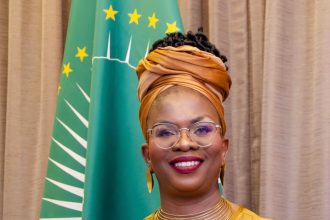In an era where 40% of South Africans actively avoid news, the ancient art of storytelling has become PR’s most sophisticated weapon, and it’s backed by neuroscience, writes Razor Head of Corporate, Ima Peter.
I grew up in Bauchi, Nigeria, where evenings around the fire were sacred. My parents and grandparents didn’t just tell stories – they transmitted our heritage, encoded moral lessons, and issued warnings through narrative. Those firelit evenings sparked my love of reading and taught me a fundamental truth: how you speak determined whether you’re truly heard.
When I came to South Africa as a teenager, the setting changed, but the power of storytelling remained a constant. Here, too, stories united communities, transferred knowledge, and built leaders. These formative years taught me to observe the subtle dance of how people speak, listen, and respond and prepared me for a future in communications.
Now, after two decades in public relations, I’ve seen the same truth reinforced in leadership: leaders are not only defined by what they choose, but by what they say. Words can build trust, shift perspectives, and drive action. Used irresponsibly, they can polarise and demolish trust.
Before we dive deeper, consider this: According to the Reuters Institute’s Digital News Report 2025, 40% of South Africans deliberately avoid news, which matches the global average. This means organisations have less than half the opportunities they think to shape their reputation in what is an already massively cluttered news and information environment. In this attention-scarce, trust-starved environment, every conversation counts. You may not get a second chance.
What our ancestors knew intuitively, science now proves definitively. Conversation neuroscience research finds that every conversation causes chemical reactions in the brain. A trust-building conversation releases oxytocin, enhancing collaboration and openness. A threatening exchange floods the system with cortisol, triggering defensive responses that can last for hours. Judith Glaser’s studies on Conversational Intelligence® show that talks are not merely the exchange of words, but of signals, which will either make people connect, resist, or disengage.
And this is gathering momentum. Harvard Business Review recently outlined five ways in which leaders convey power. The findings reinforced not tone or presence, but structure and clarity. Effective communication of leadership, they concluded, is intentional, targeted, and respectful. It’s the sort of communication that makes the brain open to new ideas and open to collaboration.
It is why we have deliberately chosen to codify this blend of storytelling and behavioural science into our Powerful Conversations Framework, as a deliberate method to design messaging that’s hard wired to desired outcomes, but also a strategic and creative approach that matches messaging to comms programmes by eliciting behaviours and shifts in perception.
The external locus, “Industry regulations require us to adapt,” resonates with those who view external forces as the primary driver. Internal locus: “We have the power to shape our market position together” appeals to those who believe in personal agency
These conditions determine what we say, how we say it, and when we say it. Leadership is no different. A CEO declaring a strategic change will be successful or unsuccessful based on whether their message is consistent with the mindset of the audience. Equally this messaging will steer the creative and executional outputs towards a more deliberate outcome.
My experience in PR has repeatedly shown the power of this approach. At times of crisis, from hostile takeover proposals to national crises, good leaders understood that every word matters. They were mindful of tone, sequence, and setting. They understood that the conversation would continue far beyond talking, built more by intuition than fact and sense making. A good conversation measurably fosters inquiry, collaboration, and trust. Communicating power transfers definition, confidence, and authority.
When science-informed communication is combined with cultural storytelling, the result is measurable: increased engagement, improved memory, and faster trust building. In leadership, this means more efficient strategy execution, faster crisis recovery, and better alignment.
Every conversation can create or dismantle trust. Please don’t waste it on jargon, wishy-washy messaging, or signs of disconnection. You may not have this chance again any time soon.
From Firelight to the Boardroom
From Bauchi to Johannesburg, from bonfire to boardroom, the cliche holds: people remember how you treated them and what you said. When you combine the people aspect of storytelling with the precision of science-based communication, you don’t merely speak. You lead. And this is the impact of a powerful conversation.




